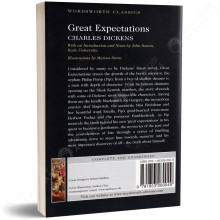About the Book
1348. The Black Death is sweeping through Europe. In Florence, plague has carried off one hundred thousand people. In their Tuscan villas, seven young women and three young men tell tales to recreate the world they have lost, weaving a rich tapestry of comedy, tragedy, ribaldry and farce.
Boccaccio’s Decameron recasts the storytelling heritage of the ancient and medieval worlds into perennial forms that inspired writers from Chaucer and Shakespeare down to our own day. Boccaccio makes the incredible believable, with detail so sharp we can look straight into the lives of people who lived six hundred years ago. His Decameron hovers between the fading glories of an aristocratic past – the Crusades, the Angevins, the courts of France, the legendary East – and the colourful squalor of contemporary life, where wives deceive husbands, friars and monks pursue fleshly ends, and natural instincts fight for satisfaction.
Here are love and jealousy, passion and pride – and a shrewd calculation of profit and loss which heralds the rise of a dynamic merchant class. These stories show us early capitalism during a moment of crisis and revelation.
About the Author
Giovanni Boccaccio
Giovanni Boccaccio (1313-1375) is heralded as one of Europe's foremost storytellers. Boccaccio is renowned for 'Decameron', a collection of one hundred novellas, and widely recognised as a masterpiece of world literature.
Giovanni Boccaccio was born in 1313. The exact details of his birth are uncertain but it is believed that he may have been born in Florence or Certaldo, Tuscany, where his family were from. Boccaccio was the son of a merchant of Certaldo, and was almost certainly born illegitimately.
Boccaccio moved to Naples with his family in 1326, when his father was appointed to head the Neapolitan branch of his bank. His father secured young Giovanni an apprenticeship at the bank, but it was not a career that appealed to him, and he eventually persuaded his father to let him study law at the Studium in the city. He studied canon law for six years, before leaving to pursue his interests in scientific and literary studies. During his time studying law, Boccaccio was introduced by his father to the Neapolitan nobility, and he quickly fell in love with Maria d’Acquino, a married daughter of King Robert of Naples. Maria was the inspiration for many of Boccaccio’s earlier works and is immortalised as the character ‘Fiammetta’ in many of Boccaccio’s prose romances (particularly Il Filocolo in 1338).
Whilst living in Naples, Boccaccio wrote Filostrato and Teseida (the sources for Chaucer’s Troilus and Criseyde and The Knight’s Tale), Filocolo and La caccia di Diana.
Boccaccio returned to Florence in 1341, having fled Naples due to tensions between the Angevin King and Florence. Boccaccio had not wanted to return to Florence, but continued to work while he was there, producing Comedia delle ninfe fliorentine (also known as Ameto) in 1341, Amorosa visione in 1342 and Fiammetta in 1343.
In 1348, Florence was ravaged by the Black Death, which killed 75% of the city’s population. This period of time is represented in one of Boccaccio’s best known works, Decameron, which Boccaccio began working on in 1349.
Decameron, a medieval allegory, is told as a frame story encompassing one hundred tales. The story goes that, during the plague at Florence in 1348, seven women and three men left the city to stay in a country villa, and over a period of ten days told 100 stories. The word Decameron combines two Greek words, δÎκαdéka(“ten”) and ἡμÎραhÄ“méra(“day”), to form a term that means ‘ten-day event’. Ten days is the time period in which the characters of the frame story tell their tales. The tales of love in Decameron range from the erotic to the tragic and include tales of wit, practical jokes, and life lessons. Decameron was completed in 1358 and was revised and rewritten by Boccaccio in 1370 -1371.
The first edition of Decameron was printed in 1470 in Venice, and numerous editions have appeared since then, in almost every European tongue. The first complete English edition was published in 1620.
Decameron has proved to be immensely successful, and has been the subject of poems by Keats, Tennyson, Longfellow, Swinburne and George Eliot, as well as being a source of inspiration for Chaucer and Shakespeare.
Scholars have noted a change in writing style in Boccaccio’s work in the 1350s. This is believed to be due to poor health and a premature weakening of his physical strength, along with the effects of disappointments in love. Having previously always written in praise of women and love, Boccaccio began to write in a more bitter style. Corbaccio was completed during this period. Boccaccio also met the poet and scholar Petrarch at this time. Petrarch and Boccaccio are credited with being the earliest humanists.
In 1360, Boccaccio began writing De mulieribus claris, a book of biographies of 106 famous women which took him fourteen years to complete.
Boccaccio never married but bore three children; Mario, Giulio and Violente. The identity of the mothers of these children are unknown.
In his final years, Boccaccio lived primarily in Certaldo. He was blighted by illnesses, some relating to obesity and others to severe edema (congestive heart failure). He died on 21st December 1375, and is buried in Certaldo.
Additional resources about Giovanni Boccaccio
- Langue
- Anglaise
- Dimensions
- 125 mm x 198 mm
- Edition
- Wordsworth Editions
- Collection
- Wordsworth Classics Of World Litterature
- Auteur
- Giovanni Boccaccio
- Poids
- 541 g
- Nombre de pages
- 848 pages
- Date de Parution
- 11/05/2004
- Série
- Classics


































